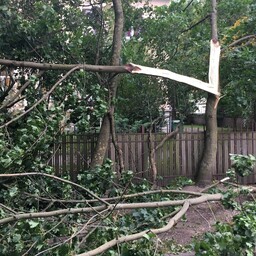This year, the rescue service has removed slightly over a thousand dangerous trees. This is much more than last year. For example, in Tartu County, the rescue service was called to remove trees 155 times last year, but this year it has already been 255 times.
Tarmo Voltein, an official of the rescue service, said that the number of incidents has increased across Estonia. In the first weeks of July, the rescue service had to remove almost three times as many trees as last year.
During storms, volunteer teams often also respond. The rescue service arrives on-site within an average of 13 minutes. Usually, a felling permit is required to remove a tree, but in exceptional cases, it can also be done by oneself.
Kaire Zimmer, an arborist from the city of Tartu, said that if a tree has been broken in a storm, it should be reported to the city. This helps to document that the tree was dangerous and could be removed without a felling permit.
As a rule, the rescue service removes trees that are dangerous to people or property. Trees that have fallen on roads are usually handled by road maintenance crews.
Voltein encouraged people to call the rescue service if they see a dangerous tree. It is necessary to call if there is a danger to people, animals, or property.
The storms this summer have been stronger than last year. Meteorologist Taimi Paljak said that this year there has been more rainfall and the air is cooler. Wet ground does not hold trees as securely, which is why they break in strong winds.
Strong winds and thunderstorms have increased tree falls. For example, the storm on July 3-4 was exceptionally strong. Under thunderclouds, the wind can reach up to 26 meters per second.

